new posts in all blogs
Viewing: Blog Posts Tagged with: Richard Thompson, Most Recent at Top [Help]
Results 1 - 16 of 16
How to use this Page
You are viewing the most recent posts tagged with the words: Richard Thompson in the JacketFlap blog reader. What is a tag? Think of a tag as a keyword or category label. Tags can both help you find posts on JacketFlap.com as well as provide an easy way for you to "remember" and classify posts for later recall. Try adding a tag yourself by clicking "Add a tag" below a post's header. Scroll down through the list of Recent Posts in the left column and click on a post title that sounds interesting. You can view all posts from a specific blog by clicking the Blog name in the right column, or you can click a 'More Posts from this Blog' link in any individual post.

By: Jerry Beck,
on 12/30/2015
Blog:
Cartoon Brew
(
Login to Add to MyJacketFlap)
JacketFlap tags:
Classic,
Warner Bros.,
Richard Thompson,
Chuck Jones,
Ken Harris,
Phil DeGuard,
Michael Maltese,
Abe Levitow,
Ben Washam,
Milt Franklyn,
One Froggy Evening,
Robert Gribbroek,
Treg Brown,
Add a tag
Sixty years ago on this day — December 31, 1955 — a short masterpiece was released into movie theaters: Chuck Jones’ One Froggy Evening. No one said anything at the time because hardly anyone ever said anything about animation at the time.
Eventually the short gained its due recognition. “The Citizen Kane of animated shorts,” Steven Spielberg once called it, and even if Spielberg had said nothing, this wordless wonder would still qualify as one of the finest of Jones’ couple of hundred Warner Bros. shorts.
Before we proceed any further though, let’s watch the film:
Let me admit: as many times as I’ve watched this film, I still cannot understand how it was made. Technically, I get it, but there’s something else going on that is impenetrable. Every member of Jones’ team is operating at the peak of their craft, a level achieved through decades of toil and refinement, yet their collaboration appears so seamless and absolute that it does not seem possible for the cartoon to have been created by mere mortals. As the skies above us and the ground below us, this cartoon is a perfectly formed natural wonder that cannot be improved upon.
The credit is due to just a couple handfuls of key individuals: Michael Maltese’s story structure reveals just enough but not all of the mystery; Abe Levitow, Richard Thompson, Ken Harris, and Ben Washam bring the characters to life through perfectly timed and funny animation (it’s funny because it’s perfectly timed); the layouts of Bob Gribbroek and background paintings of Phil DeGuard drop us into the middle of a believable mid-20th century American metropolis. And let’s not forget the musical stylings of Milt Franklyn, the sound effects of Treg Brown, and certainly not the voice of Michigan J. Frog himself, Bill Roberts.
And consider this: Jones’s crew made a new short every three weeks or so. These guys didn’t labor over this film for years, and they certainly didn’t have time to reflect or be precious about it. They simply churned it out, as they did countless others, over and over again. Lather, rinse, repeat, and eventually retire.
But it is director Jones himself who reminds us why he is considered one of animation’s greats. The presence of Jones, who created more layout drawings per film than almost any other Golden Age theatrical short director, can be felt in every expression and pose of One Froggy Evening. Jones doesn’t rely on pre-existing stock poses or expressions. He is a cartoonist who is a master of his universe, and he effortlessly creates custom poses and expressions for each and every scene, in his inimitable style that can only be described as Jonesian.
Jones’ advantage is that he has something that most comedy animation directors, then or now, don’t have, which is an obsession for detail. When he couldn’t find the proper ragtime tune for his singing frog, he wrote his own from scratch with the help of Maltese, resulting in “The Michigan Rag.” The song sounds so authentic that to this day people wonder which songs in the film were pre-existing and which were created specifically for the film (this site explains it all).
His gift for observation extended to his amphibian star. As a frog owner myself, I’m routinely annoyed when animators don’t take the time to get frogs right. When a frog swallows his food, his eyes sink deep into his head. Few animators seem to notice this. But there is no such laziness in Jones’s work. “I remembered from when I was a kid,” Chuck Jones once explained. “Any boy that’s ever picked up a frog knows how the body sits and the limbs hang down. So we had to be certain, in those first few seconds on the screen, that when [Michigan] appeared he looked like a frog. Even that his eyes blinked upward.”
Perhaps audiences didn’t notice every single directorial choice that Jones made during the course of the production. Eyes blinking upward certainly won’t make or break any cartoon. But those hundreds of directorial choices in an animated film eventually add up. And audiences always notice one thing: does the director care? Jones cared. He obsessed. And in this rare instance, he made all the right choices, resulting in a perfect cartoon gem.
Frankly, I’m content with the fact that I’ll never understand how he and his crew made it.
The post An Appreciation of Chuck Jones’ ‘One Froggy Evening’ On Its 60th Birthday appeared first on Cartoon Brew.
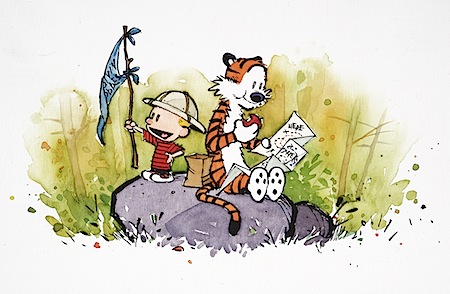
Yep you head me right. This weekend the Billy Ireland Cartoon Museum and LIbrary in Columbus Ohio will open two incredible shows,
The Irresistible Force Meets The Immovable Object: A Richard Thompson Retrospective and Exploring Calvin And Hobbes and in advance of the show Jenny Robb has interviewed Bill Watterson and Caitlin McGurk has interviewed Richard Thompson. You’ll obviously want to read the whole thing. Watterson, in an extremely rare interview, revisits his greatest creation:
JR: It’s been almost 30 years since Calvin and Hobbes launched, and almost 20 since it ended. How did it feel to revisit the strip for this exhibition?
BW: Oh, it’s fairly weird. There’s a sort of jet lag when you time-travel to your own past.
He also talks about the current state of cartooning, wondering if any can find an audience with so much competition but pointing out “The gatekeepers are gone, so the prospect for new and different voices is exciting. Or at least it will be if anyone reads them. And it will be even more exciting if anyone pays for them. It’s hard to charge admission without a gate.”
Richard Thompson calls the end of print “sad and confusing” but adds “Comics are, as they say, blowing up. The chance for invention is great but the chance for moneymaking is small. Right now creators are pretty much screwed.”
SO perhaps look at the dual show as the last celebration of an artistic and financial era era of comic strips now as lost as vaudeville and radio drama. OR to be more upbeat, a celebration of two amazing artists who have unforgettably touched our hearts.
The opening for the exhibits is tomorrow night. We’ll be awaiting the tweets and blogs posts eagerly.
This is a great weekend for comics in Columbus. There’s also a Lilli Carré exhibits at the Columbus Museum of Art.

I am saddened by the news that Richard Thompson is ending his comic strip Cul de Sac due to difficulties with his Parkinson’s disease. Richard is one of the nicest cartoonists I’ve had the pleasure to meet, and Cul de Sac is a rare gem — arguably the last truly great comic strip we’re likely to see on the traditional newspaper comics page.

.

Richard Thompson and his charming
Cul de Sac comic strip have numerous fans in the comics community. So, when he was diagnosed with Parkinson’s Disease, his personal friend Chris Sparks started educating himself on the disease and the best ways to help. His research lead him to create Team Cul de Sac, a division of Team Fox and The Micheal J. Fox Foundation for Parkinson’s Research.
Many of you have heard about and seen Bill Watterson’s painting of Petey Otterloop (scroll down if you haven’t). What many have overlooked is that numerous cartoonists, both from comic strips and comic books, have created original artwork to benefit Team Cul de Sac.
A benefit book (seen above) will be published by Andrews McMeel in June, and the art is currently being auctioned by Heritage Auctions, with final bidding Sunday, June 10 in Dallas. All 148 lots can be viewed online, and if you register, you can bid on the artwork.
This is an incredible auction! Not only is it for a great cause, but you’ll find original artwork here from many artists! Yes, Bill Watterson is known for being a recluse, never showing his paintings to anyone, but many other comic strip creators rarely attend comics conventions or do sketches. I’ve selected some of the more interesting pieces and posted them below, but please visit the Heritage Auctions website and place a bid! If you can’t afford the original artwork, click on the book link above and order a copy of the hardcover. There’s a Google Preview available, which shows the artwork in color, along with the a foreword from Richard Thompson, and a profile reprinted from the Washington Post.
Go read the comic strip for free! It’s as good as Calvin & Hobbes, but different. Or, if you like your comics the old fashioned way, buy the books!
Bill Watterson

By:
Heidi MacDonald,
on 4/24/2012
Blog:
PW -The Beat
(
Login to Add to MyJacketFlap)
JacketFlap tags:
Mo Willems,
Conventions,
Downloadable Comics,
Laura Park,
Richard Thompson,
Joe Lambert,
R. Sikoryak,
James Sturm,
Tom Gammill,
Ivan Brunetti,
National Cartoonists Society,
B.C.,
Melissa Mendes,
Mell Lazarus,
Hilary Price,
Family Circus,
Dennis the Menace,
Comics Collections,
Beetle Bailey,
Cartoon Crier,
Center for Cartoon Studie,
Cole Closser,
free comics,
newspaper comics,
Add a tag
BY JEN VAUGHN – Read it and weep! Go have yourself a good cry (probably at a Disney movie). In the tradition of occasionally free newsprint tabloid comics like the one-shot Caboose and quarterly Smoke Signal, a collaborative comic will be available this weekend at MoCCA! Official press release below:
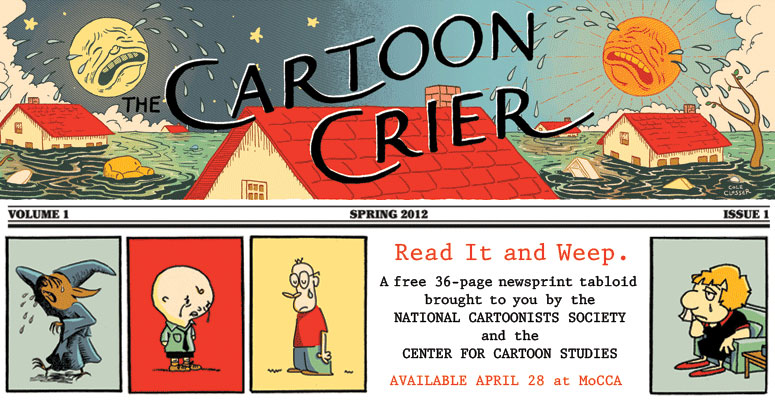
The word “comic” has always been a bit of misnomer and The Cartoon Crier hopes to set the record straight. Sorrow and woe is the focus of this free 36-page newspaper tabloid that highlights the work of members of The National Cartoonists Society and of The Center for Cartoon Studies’ community.
The Cartoon Crier will premiere on Saturday, April 28 at The Museum of Comic and Cartoon Art Festival (MoCCA) in New York City.
The Cartoon Crier features the saddest strips from iconic comics like Family Circus, Beetle Bailey, Dennis the Menace, B.C., and For Better and For Worse. The Cartoon Crier also includes comics by Ivan Brunetti, Mell Lazarus, Melissa Mendes, Joe Lambert, Tom Gammill, Hilary Price, Laura Park, Richard Thompson, and Mo Willems as well as new work from the paper’s editors Cole Closser, R. Sikoryak, and James Sturm.
The Cartoon Crier will be available as a free download on May 1 from cartoonstudies.org.
—
Jen Vaughn is ready to weep tears in four colors: CMYK.

Glenn Fleishman over at Boing Boing.net did a fantastic article about cartoonist Richard Thompson, creator of the comic strip Cul de Sac.
The article speaks of Richard's fight against Parkinson's disease, the help Richard has received from his cartooning colleagues to keep his strip going strong and a book that Richard's pal, Chris Sparks, has put together as a way to fund a cure for Parkinson's.
Buy the Team Cul de Sac book by Chris Sparks.

Today I begin a new adventure as the assistant to NCS Cartoonist of the Year, Richard Thompson. I will be helping out with art duties on his comic strip, Cul de Sac.
As some of you may know, in 2009 Richard announced he was diagnosed with Parkinson's.
Earlier this year, he took a hiatus from Cul de Sac to focus on treatment for his Parkinson's and he allowed some guest cartoonists to take over the strip while he was away.
During his hiatus, I got an e-mail from Richard asking if I'd like to help out on the strip.
I grew up wanting to draw a comic strip.
As a kid, I would read the comics in the newspaper every single day.
In elementary school, I drew Snoopy, Garfield, Popeye and other comic strip characters on classmates' folders for money.
That's how much I wanted to do it.
So of course, the opportunity to work on one of the best comic strips of all time was a no-brainer.
It's my childhood dream come true.
But it's more than that.
For me, first and foremost, it's about helping out a friend.
It's no secret that Parkinson's sucks.
If you know anyone who has it, you know how much more difficult it makes even the simplest of tasks.
Imagine trying to draw, ink or letter a comic strip that's printed about four inches wide in a newspaper.
And imagine doing that every day, week after week.
Those deadlines for a healthy person are hell, for someone dealing with something like Parkinson's, the deadlines are damn near impossible.
Lending Richard a hand, a drawing hand, is an honor.
Many people repeat this sentiment, Richard is one of the nicest, kindest people on the planet.
He really is. And I'm not just saying that because he's my boss.
Have no doubt, this change in Cul de Sac is a little blip to the dedicated CdS fan. Richard is manning the ship, writing every strip in the way only Richard can. I'm here to lend a hand with the art when and where he needs it.
Now if you will excuse me, Richard's coffee cup needs to be refilled and it's a 700 mile trip to get there.
Cul de Sac is back.
Link: Help fund the fight against Parkinson's disease by purchasing Chris Sparks' book, "Team Cul de Sac."

By:
Betsy Bird,
on 10/9/2011
Blog:
A Fuse #8 Production
(
Login to Add to MyJacketFlap)
JacketFlap tags:
graphic novels,
First Second,
Jules Feiffer,
Leonard Marcus,
Sara Varon,
David Macaulay,
nursery rhymes,
Patrick McDonnell,
Matt Forsythe,
Scott Campbell,
Laura Park,
Eleanor Davis,
Eric Orchard,
macmillan,
Tao Nyeu,
Craig Thompson,
Richard Thompson,
Mark Siegel,
Lucy Knisley,
Mike Mignola,
Gahan Wilson,
Roz Chast,
Vera Brosgol,
Jordan Crane,
Gene Luen Yang,
Marc Rosenthal,
Richard Sala,
Theo Ellsworth,
Raina Telgemeier,
James Sturm,
JP Coovert,
Tony Millionaire,
middle grade graphic novels,
Dave Roman,
Kate Beaton,
Jaime Hernandez,
Stan Sakai,
Nick Bruel,
Nick Abadzis,
Gilbert Hernandez,
Stephanie Yue,
Mo Oh,
Chris Duffy,
Cyril Pedrosa,
Drew Weing,
George O’Connor,
Jen Wang,
Lark Pien,
Lilli Carre,
Mark Martin,
Rebecca Dart,
Vanessa Davis,
Add a tag
 Nursery Rhyme Comics
Nursery Rhyme Comics
Edited by Chris Duffy
Introduction by Leonard S. Marcus
$18.99
ISBN: 978-1-59643-600-8
Ages 9-12
On shelves October 11, 2011
Nursery rhymes. What’s up with that? (I feel like a stand up comedian when I put it that way). They’re ubiquitous but nonsensical. Culturally relevant but often of unknown origins. Children’s literary scholar Leonard Marcus ponders the amazing shelf life of nursery rhymes himself and comes up with some answers. Why is it that they last as long as they do in the public consciousness? Marcus speculates that “the old-chestnut rhymes that beguile in part by sounding so emphatically clear about themselves while in fact leaving almost everything to our imagination” leave themselves open to interpretation. And who better to do a little interpreting than cartoonists? Including as many variegated styles as could be conceivably collected in a single 128-page book, editor Chris Duffy plucks from the cream of the children’s graphic novel crop (and beyond!) to create a collection so packed with detail and delight that you’ll find yourself flipping to the beginning to read it all over again after you’re done. Mind you, I wouldn’t go handing this to a three-year-old any time soon, but for a certain kind of child, this crazy little concoction is going to just the right bit of weirdness they require.
 Fifty artists are handed a nursery rhyme apiece. The goal? Illustrate said poem. Give it a bit of flair. Put in a plot if you have to. So it is that a breed of all new comics, those of the nursery ilk, fill this book. Here at last you can see David Macaulay bring his architectural genius to “London Bridge is Falling Down” or Roz Chast give “There Was a Crooked Man” a positive spin. Leonard Marcus offers an introduction giving credence to this all new coming together of text and image while in the back of the book editor Chris Duffy discusses the rhymes’ history and meaning. And as he says in the end, “We’re just letting history take its course.”
Fifty artists are handed a nursery rhyme apiece. The goal? Illustrate said poem. Give it a bit of flair. Put in a plot if you have to. So it is that a breed of all new comics, those of the nursery ilk, fill this book. Here at last you can see David Macaulay bring his architectural genius to “London Bridge is Falling Down” or Roz Chast give “There Was a Crooked Man” a positive spin. Leonard Marcus offers an introduction giving credence to this all new coming together of text and image while in the back of the book editor Chris Duffy discusses the rhymes’ history and meaning. And as he says in the end, “We’re just letting history take its course.”
In the interest of public scrutiny, the complete list of artists on this book consists of Nick Abadzis, Andrew Arnold, Kate Beaton, Vera Brosgol, Nick Bruel, Scott Campbell, Lilli Carre, Roz Chast, JP Coovert, Jordan Crane, Rebecca Dart, Eleanor Davis, Vanessa Davis, Theo Ellsworth, Matt Forsythe, Jules Feiffer, Bob Flynn, Alexis Frederick-Frost, Ben Hatke, Gilbert Hernandez, Jaime Hernandez, Lucy Knisley, David Macaulay, Mark Martin, Patrick McDonnell, Mike Mignola, Tony Millionaire, Tao Nyeu, George O’Connor, Mo Oh, Eric Orchard, Laura Park, Cyril Pedrosa, Lark Pien, Aaron Renier, Dave Roman, Marc Rosenthal, Stan Sakai, Richard Sala, Mark Siegel, James Sturm, Raina Telgemeier, Craig Thompson, Richard Thompson, Sara Varon, Jen Wang, Drew Weing, Gahan Wilson, Gene Luen Yang, and Stephanie Yue (whew!). And as with any collection, some of the inclusions are going to be stronger than others. Generally speaking if fifty people do something, some of them are going to have a better grasp on the process than others. That said, only a few of these versions didn’t do it for me. At worst the versions were mediocre. At best they went in a new direction with their mat

By: John,
on 8/25/2011
Blog:
DRAWN!
(
Login to Add to MyJacketFlap)
JacketFlap tags:
comics,
documentary,
Scott McCloud,
Jeff Smith,
Richard Thompson,
Dan Piraro,
Kate Beaton,
Hilary Price,
Scott Kurtz,
Ryan North,
Jim Davis,
Dave Kellet,
Fred Schroeder,
Add a tag
Yes, I know. Kickstarter projects are popping up like pimples on a nervous teenager these days, and I know many of us are starting to feel the pinch of constantly being asked to donate to this project or that, particularly while the economy is tanking. Regardless, this one sounds pretty exciting and is very relevant to those of us who draw for a living:
We’re Dave Kellett & Fred Schroeder, creators of the comics documentary STRIPPED. This film is our love-letter to the art form: Bringing together 60 of the world’s best cartoonists into one extraordinary, feature-length documentary. The film sits down with creators to talk about how cartooning works, why it’s so loved, and how as artists they’re navigating this dicey period between print and digital options…when neither path works perfectly. We want this film to capture the extraordinary people behind the comics you love, to show how they work…and ask the question: “Where does the art form go from here?”
(via STRIPPED: The Comics Documentary by Small Fish Studios — Kickstarter)

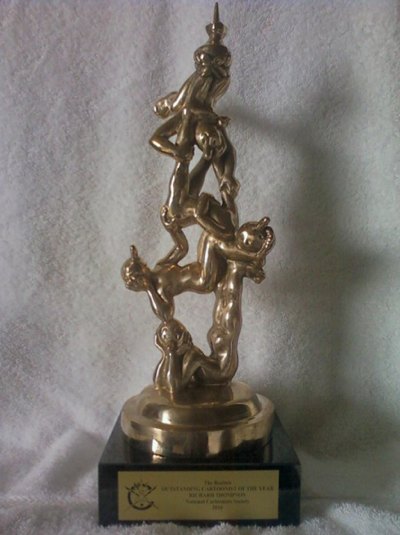
The 2011 Reuben Awards for the best in cartooning and related fields were presented at the annual National Cartoonists Society meeting on Saturday. Richard Thompson beat out Glen Keane and Stephan Pastis for THE Reuben as cartoonist of the year. Jill Thompson won the Comic Book category for BEASTS OF BURDEN, and Joyce Farmer won the graphic novel category for SPECIAL EXITS, while Jeff Parker and Steve Kelley’s DUSTIN won for best comic strip.
Thompson blogged his reaction:
The NCS handed me this last night for which I’m grateful in countless ways, not the least being that I didn’t fall over.
Alan Gardner the whole list of winners:
TELEVISION ANIMATION
Dave Filoni – Supervising Director / Production Designer, “Star Wars: The Clone Wars”
FEATURE ANIMATION
Nicolas Marlet, Character Designer, “How to Train Your Dragon”
NEWSPAPER ILLUSTRATION
Michael McParlane
GAG CARTOONS
Gary McCoy
GREETING CARDS
Jim Benton
NEWSPAPER COMIC STRIPS
Jeff Parker and Steve Kelley “Dustin”
NEWSPAPER PANEL CARTOONS
Glenn McCoy “Flying McCoys”
MAGAZINE FEATURE/MAGAZINE ILLUSTRATION
Anton Emdin
BOOK ILLUSTRATION
Mike Lester “The Butt Book”
EDITORIAL CARTOONS
Gary Varvel
ADVERTISING ILLUSTRATION
Dave Whamond
COMIC BOOKS
Jill Thompson “Beasts of Burden”
GRAPHIC NOVELS
Joyce Farmer “Special Exits”
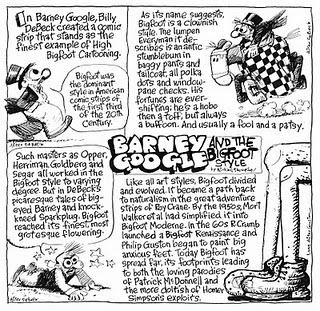
Richard Thompson’s intro to the new Barney Google book.
Another lovingly curated collection of a classic comic, edited by Craig Yoe, available here.
We are living in a golden age of golden age comic strip reprints.


Richard Thompson (for my money, one of the best in the biz*) gives us a peek under the hood with a run-down of his watercolor palette and working method, here.
*Would you like to know when I fell in love with Thompson’s work? 20 or so years ago, when I first saw this masterpiece.
Posted by Adam Koford on Drawn! The Illustration and Cartooning Blog |
Permalink |
No comments
Tags: palette, Richard Thompson, watercolor, working method
The great Richard Thompson reports on his blog that today is Ludwig's birthday.
While rummaging through some of my things, I found this card given to me by my wife's aunt, Jan.
I previously posted about these cards here.
This is an unique birthday card because it is not telling anyone Happy Birthday, other than Beethoven and the card is celebrating his 200th birthday, which means the card was






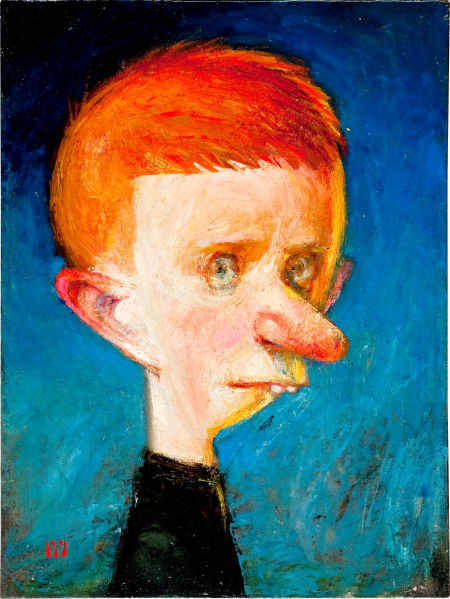






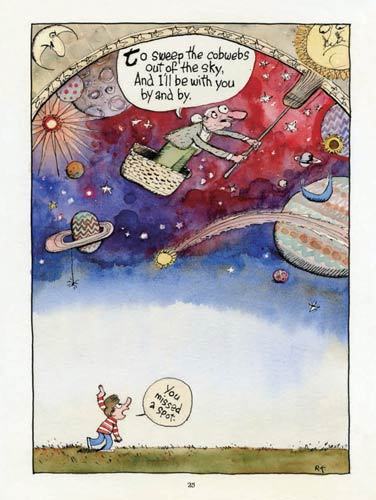
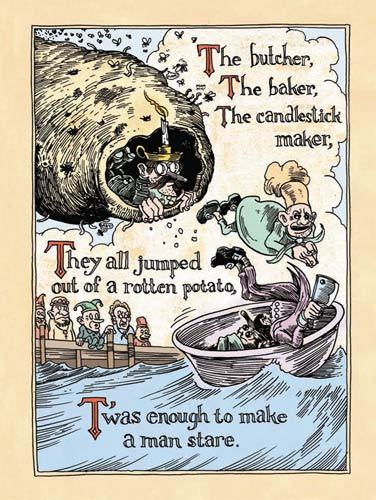
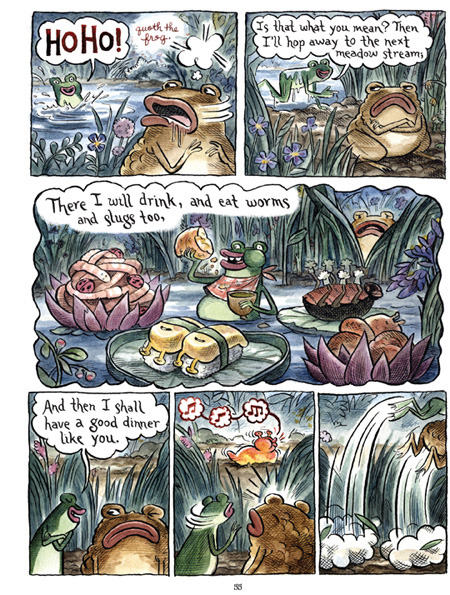
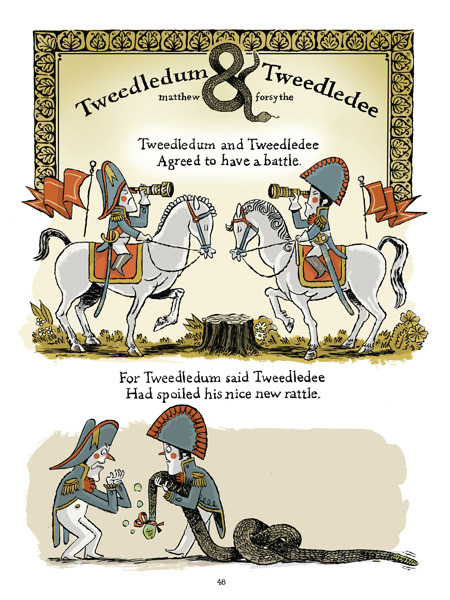



I can’t get to the site. Either I’m having issues or they were not prepared for the level of interest in what Watterson has to say after 20 years of silence.
Looks like the latter. Google cache version (text only) :
http://webcache.googleusercontent.com/search?q=cache:X8QtX25fYPAJ:library.osu.edu/blogs/cartoons/2014/03/20/new-interview-calvin-hobbes-creator-bill-watterson-and-cul-de-sac-creator-richard-thompson-talk-libraries-comics-and-the-creative-process-with-ohio-state/&client=firefox-a&hs=uRi&hl=en&strip=1
Ok, seems to be working now.
Interesting read, from both Watterson and Thompson, although a bit of a bummer how both are so down on digital. I did like this quote from Thompson very much, on what it felt like to hear that Watterson liked his work, “It was like receiving an ‘atta boy’ from Jesus Christ.”
Well ain’t THAT a kick in the head! Thanks for sharing!
I’ve had my C&H collections since I was 11. Easily my oldest (and most dog-eared) bookshelf comics.